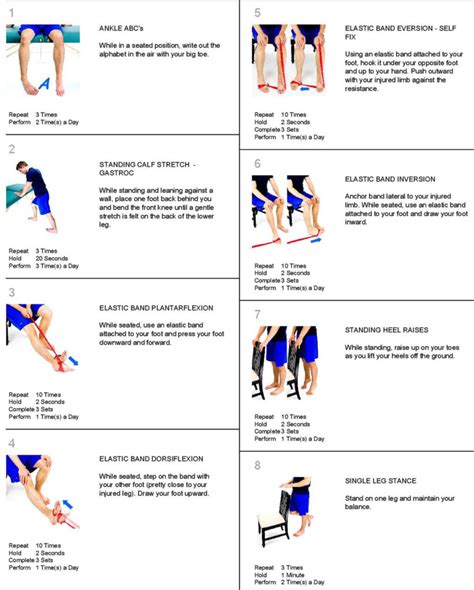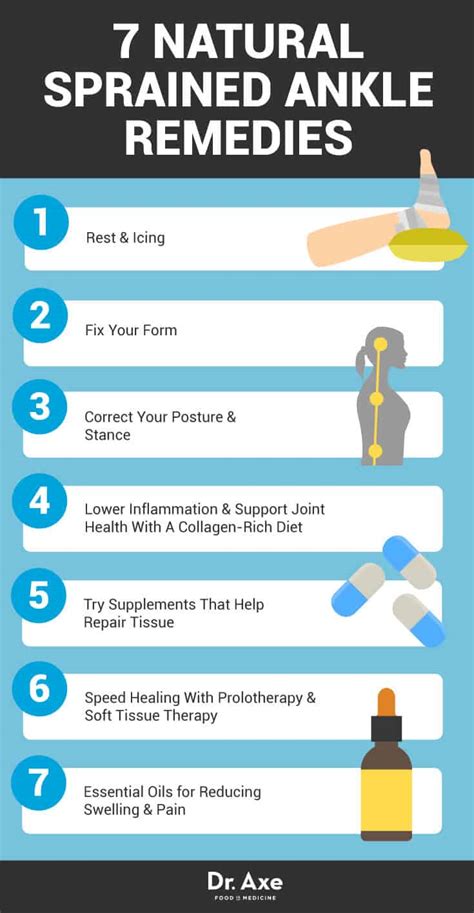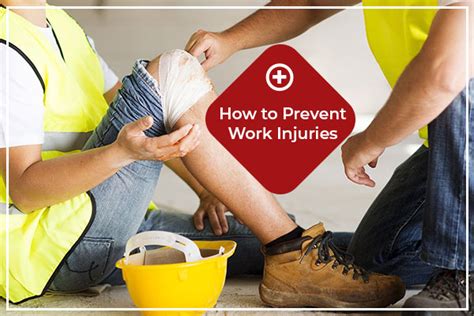Intro
Learn effective sprained ankle self care tips, including pain relief, swelling reduction, and recovery techniques, to promote healing and prevent further injury with expert-approved methods and natural remedies.
Sprained ankles are one of the most common injuries that can happen to anyone, regardless of their age or activity level. Whether you're an athlete, a fitness enthusiast, or just someone who loves to stay active, a sprained ankle can be a frustrating and painful experience. However, with the right self-care tips, you can reduce the pain, promote healing, and get back on your feet in no time. In this article, we'll explore the importance of proper self-care for sprained ankles and provide you with practical tips to help you recover quickly and effectively.
A sprained ankle can be a debilitating injury that can affect your daily life, making it difficult to perform even the simplest tasks. The pain and swelling can be overwhelming, and if left untreated, it can lead to further complications, such as chronic ankle instability or arthritis. Therefore, it's essential to take immediate action and start treating your sprained ankle as soon as possible. With the right self-care tips, you can reduce the risk of long-term damage and promote a speedy recovery.
The key to recovering from a sprained ankle is to provide your ankle with the right conditions to heal. This includes reducing pain and inflammation, promoting blood flow, and strengthening the surrounding muscles and ligaments. By following a comprehensive self-care plan, you can help your ankle heal faster, reduce the risk of further injury, and get back to your normal activities in no time. In the following sections, we'll delve into the details of sprained ankle self-care, providing you with practical tips and advice to help you recover quickly and effectively.
Sprained Ankle Self-Care Basics

In addition to the RICE principle, there are several other self-care basics that can help promote healing and reduce pain. These include taking over-the-counter pain medication, such as ibuprofen or acetaminophen, to reduce pain and inflammation. It's also essential to wear comfortable shoes that provide adequate support and stability, and to avoid walking or putting weight on the affected ankle. By following these self-care basics, you can help your ankle heal faster and reduce the risk of further injury.
Importance of Rest and Recovery
Rest and recovery are crucial components of sprained ankle self-care. When you sprain your ankle, the ligaments and muscles surrounding the joint become stretched or torn, leading to pain and inflammation. If you continue to put weight on the affected ankle, you can further exacerbate the injury, leading to chronic pain and instability. By resting your ankle and avoiding any activities that may have caused the injury, you can give your ankle the time it needs to heal.In addition to rest, recovery is also essential for promoting healing and reducing pain. This includes getting enough sleep, eating a balanced diet, and managing stress. When you're well-rested, your body is better equipped to heal and repair damaged tissues, reducing the risk of further injury. A balanced diet that's rich in fruits, vegetables, and whole grains can also provide your body with the necessary nutrients to promote healing. By prioritizing rest and recovery, you can help your ankle heal faster and reduce the risk of long-term damage.
Exercises and Stretches for Sprained Ankle

Other exercises and stretches that can help promote healing and reduce pain include calf raises, where you raise your heel up and down, and ankle extensions, where you point your toes up and down. It's essential to start slowly and gradually increase the intensity and duration of your exercises and stretches as your ankle becomes stronger and more mobile. By incorporating exercises and stretches into your self-care routine, you can help your ankle heal faster, reduce the risk of further injury, and improve overall ankle mobility.
Benefits of Physical Therapy
Physical therapy can be a highly effective way to promote healing, reduce pain, and improve ankle mobility. A physical therapist can work with you to develop a personalized exercise program that's tailored to your specific needs and goals. This can include exercises and stretches to improve ankle mobility, strengthen the surrounding muscles and ligaments, and promote balance and proprioception.In addition to exercises and stretches, physical therapy can also include modalities such as heat, cold, or electrical stimulation to reduce pain and inflammation. A physical therapist can also provide education on proper ankle mechanics, including how to walk, run, and jump safely, reducing the risk of further injury. By incorporating physical therapy into your self-care routine, you can help your ankle heal faster, reduce the risk of long-term damage, and improve overall ankle function.
Nutrition and Supplements for Sprained Ankle

In addition to a balanced diet, there are several supplements that can help promote healing and reduce pain. These include turmeric, which contains a powerful anti-inflammatory compound called curcumin, and ginger, which has anti-inflammatory properties. Other supplements that can help promote healing and reduce pain include glucosamine and chondroitin, which can help promote joint health and reduce inflammation. By incorporating a balanced diet and supplements into your self-care routine, you can help your ankle heal faster and reduce the risk of long-term damage.
Importance of Hydration
Hydration is essential for promoting healing and reducing pain. When you're well-hydrated, your body is better equipped to repair damaged tissues, reduce inflammation, and promote blood flow. Dehydration, on the other hand, can exacerbate pain and inflammation, leading to further injury. It's essential to drink plenty of water throughout the day, aiming for at least eight glasses of water per day.In addition to water, there are several other beverages that can help promote hydration and reduce pain. These include coconut water, which is rich in electrolytes, and herbal teas, such as peppermint or chamomile, which can help reduce inflammation and promote relaxation. By prioritizing hydration, you can help your ankle heal faster, reduce the risk of long-term damage, and improve overall health and well-being.
Preventing Further Injury

Other ways to prevent further injury include strengthening the surrounding muscles and ligaments, improving balance and proprioception, and using ankle supports or braces to provide additional stability. By taking these precautions, you can help reduce the risk of further injury, promote healing, and improve overall ankle function. It's essential to be patient and gradual in your return to activity, avoiding any activities that may cause pain or discomfort.
Returning to Activity
Returning to activity after a sprained ankle can be challenging, but with the right approach, you can reduce the risk of further injury and promote healing. It's essential to be patient and gradual in your return to activity, starting with low-impact exercises and gradually increasing the intensity and duration. It's also essential to listen to your body, stopping immediately if you experience any pain or discomfort.Other tips for returning to activity include wearing proper footwear, using ankle supports or braces, and avoiding activities that may have caused the injury. It's also essential to strengthen the surrounding muscles and ligaments, improving balance and proprioception to reduce the risk of further injury. By taking these precautions, you can help promote healing, reduce the risk of long-term damage, and improve overall ankle function.
Conclusion and Next Steps

If you're experiencing persistent pain or discomfort, it's essential to seek medical attention. A healthcare professional can provide you with a proper diagnosis and treatment plan, helping you to promote healing and reduce the risk of further injury. By taking the right steps and seeking medical attention when necessary, you can help your ankle heal faster, reduce the risk of long-term damage, and improve overall ankle function.
What are the most common causes of sprained ankles?
+Sprained ankles are commonly caused by rolling, twisting, or landing awkwardly on the ankle, which can cause the ligaments to stretch or tear. Other common causes include wearing improper footwear, playing sports that involve jumping or quick changes of direction, and having weak or unstable ankles.
How long does it take to recover from a sprained ankle?
+The recovery time for a sprained ankle can vary depending on the severity of the injury. Mild sprains can take 1-3 weeks to recover, while more severe sprains can take 6-12 weeks or longer. It's essential to follow a comprehensive self-care plan and seek medical attention if necessary to promote healing and reduce the risk of long-term damage.
Can I prevent sprained ankles?
+Yes, there are several ways to prevent sprained ankles, including wearing proper footwear, warming up before exercise, and strengthening the surrounding muscles and ligaments. It's also essential to improve balance and proprioception, and to use ankle supports or braces to provide additional stability. By taking these precautions, you can help reduce the risk of sprained ankles and promote overall ankle health.
